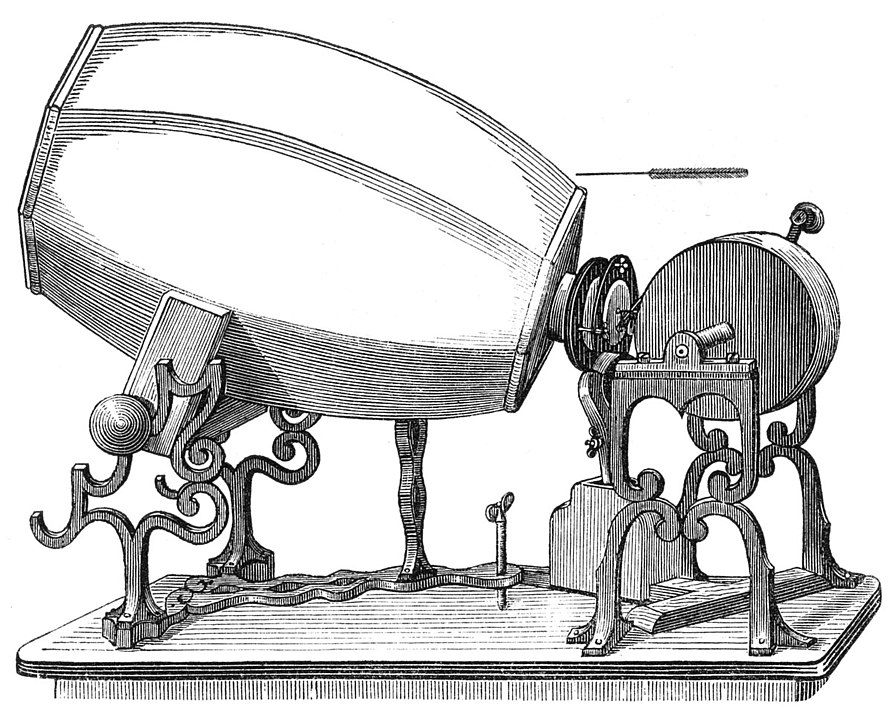The only thing that separates me, the host of the coolest, weirdest, most awesome podcast of the year, from being that guy at the coffee shop who loudly blabs on about whatever article he just read is the invention of recorded sound.
Today is a pretty important day in the history of recordings, the anniversary of one of the oldest, if not the oldest, sound recording ever made.
The story of sound usually starts with Thomas Edison, whose audio-capturing wax cylinders first showed up in 1877.
But another innovator came up with a recording device more than a decade earlier.
His name was Édouard-Léon Scott de Martinville, and in the mid 1850s he dreamed up the idea of a device that would capture sounds in a room, the way a daguerrotype machine captured an image. He called it the phonautograph.
First he set up a thin membrane that, like the eardrum, or the inner workings of microphones, would react to sound vibrations. To that membrane, he attached a stylus, and then moved a soot-covered paper or plate underneath the stylus, which drew its impressions of sound into the soot. Not that different than what Edison’s phonograph was etching into those wax cylinders.
So why do we know Edison, and not Scott, as an audio pioneer? Well, Scott’s phonautograph was short on one key feature: it could document sound, but there was no way to play it back.
At least not until 2008, when a team called the First Sounds project scanned and processed Scott’s phonautograph sheets, including a recording of his daughter singing the French folk song “Au Clair de la Lune” on April 9, 1860, a sound that had not been heard for 148 years.
We’ve been talking about sound today, so in the interests of balance, let’s talk about a place where there’s almost no sound: anechoic chambers, spaces designed to block out every sound possible.
These have been used to test the effects of products that make very quiet sounds, like heart valves.
They’re also useful in trying to help people who are extremely sensitive to sounds and other stimuli, like some people on the autism spectrum.
And, in recent years, they’ve also picked up a new function: as a tourist destination for people who are used to living in our increasingly loud world, and want to find out whether a lot of quiet can bring a little peace.
What Was the First Sound Ever Recorded by a Machine? (Time)
The Phonautograms of Édouard-Léon Scott de Martinville (FirstSounds.org)
‘Quietest place on Earth’ finds purpose in healing humans (Minneapolis Star-Tribune)
Image via Wikicommons

